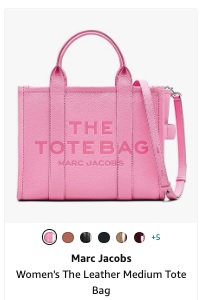Reduce your Ad Reliance: How to decrease ad spend and boost organic sales
With Q4 approaching, we know our budgets will go into sustaining the natural traffic increase that comes from buyers browsing ahead of the major events.
So what better time to check if you can save some of your budget through decreasing your Ad Reliance?

What is Ad Reliance?
Let’s start by clarifying what Ad Reliance is. Ad Reliance indicates the percentage of sales generated by advertising, as opposed to the percentage of sales generated organically.
The total sales figure contains both organic and sponsored orders, and by considering percentage of Ad Reliance, you can clearly see the role advertising plays in driving your sales volume.
If an account presents a 60% Ad Reliance, that means 60% of the orders came from a click on a sponsored ad. If, on the other hand, the Ad Reliance is 30%, this tells us that 70% of the total orders were generated organically.
That’s the definition of Ad Reliance. Now let’s look at which situation is ideal for most accounts.
What’s the ideal Ad Reliance scenario?
So, a 60% Ad Reliance means that we have paid a cost-per-click (CPC) on 60% of the orders generated; 30% Ad Reliance means we have paid a CPC for 30% of the orders instead. What isn’t included in the orders generated through sponsored clicks comes through traffic generated organically.
With that said: what’s wrong with having a high percentage of your orders driven by ads? Surely that shows the advertising is effective. So why is it so important to keep your Ad Reliance in check?
Let’s compare the two scenarios mentioned above, and their effect on your Total Advertising Cost of Sales (TACoS).
We’ll assume that:
- CPC for Sponsored Clicks = $1
- Average Order Value (AOV - the average price of your products) = $50
- Clicks needed to generate one order = 15
SCENARIO 1:
Ad Reliance = 60%
Orders generated = 60
Orders generated from ads = 36
Sales generated: 60 x $50 = $3,000
Sponsored Clicks = 36 x 15 = 540
Total Cost = 540 x $1 = $540
TACoS = $540 / $3,000 = 18%
SCENARIO 2:
Ad Reliance = 30%
Orders generated = 60
Orders generated from ads = 18
Sales generated: 60 x $50 = $3,000
Sponsored Clicks = 18 x 15 = 270
Total Cost = 270 x $1 = $270
TACoS = $270 / $3,000 = 9%
From these examples, you can clearly see the benefits of maintaining a low Ad Reliance. The question is - how do you decrease Ad Reliance, without affecting your sales?
There are a couple of solutions.
Solution 1: Reduce spend on branded search terms when not necessary
Sometimes you have to defend your brand by covering your main search terms with Ads, to avoid competitors gaining important placements with your branded keywords.
But when your brand is owning prominent positions organically, is it always necessary to spend and land the sponsored placements too?
Take a look at this example.
The search term “marc jacobs tote bag” delivers these results:
Now a person searching for a Marc Jacobs tote bag probably has an extremely high purchase intent, so even if the first (Sponsored) placement is covered by a competitor, they will still go for the Marc Jacobs bag.
But in this case, money is being invested in occupying that first slot, and it’s likely that customers will click on it, being in first position. Following the calculation above, that results in the seller paying for each click, when they could rely on the free clicks generated by the other slots and avoid the expense.
Obviously not all brands have the same brand awareness, so what works for Marc Jacobs might not work for you. This is why we recommend carrying out tests constantly and on small batches of branded keywords, to see the impact on total sales volume. If reducing spend does not impact sales volume, it’s a clear indication that this is the right choice, and your Ad Reliance will be positively impacted.
Solution 2: Increase organic success through boosting traffic and Conversion Rate
This is a less straightforward concept, because organic success comes from various factors. However, there are some things we can do to impact organic traffic and CVR positively.
Optimise content. You can hit the best suited search terms through advertising, but that involves a cost when customers click on the ad.
Through SEO content optimisation, you can let Amazon know the keywords your product should be pushed for organically. This, combined with advertising efforts, will put the product in front of customers organically and through sponsored efforts, maximising both paid and unpaid traffic.
Boost conversion. Once you have the traffic element sorted, the next step is to ensure that those who land on your product detail page complete a purchase. For that to happen, ensure your content showcases USPs, main features and specs of the product, to match the most popular searches. This will help the customer move from the consideration to the conversion phase.
As the Amazon algorithm registers increased traffic and incremental conversions for determined search terms, it will see it as a cue to push the product in the organic top of search placements: free traffic that will result in a decrease in Ad Reliance, and an increase in profitability.